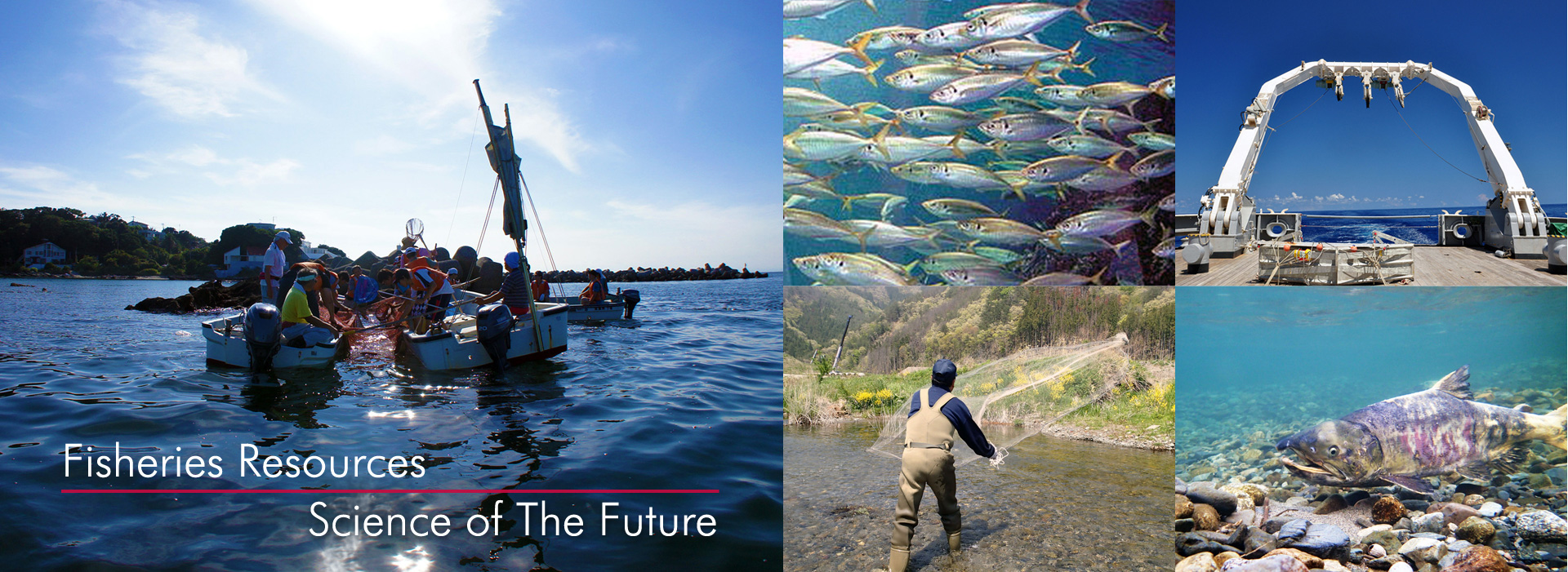
For a long time, people believed the ocean was so large that its biological resources were unlimited. However increased population growth and technological improvements led by the industrial revolution caused fisheries harvests to increase rapidly, and now the ocean is no longer viewed as an unlimited resource. In the new era of marine exploitation that began with the introduction of the United Nations Convention on the Law of the Sea (UNCLOS) and the use of Exclusive Economic Zones (EEZ), it is now a time for “fishing with responsibility”. In Japan, the Total Allowable Catch (TAC) system is used for major fishery stocks and there is increased demand for more scientific stock assessment. More focus is also aimed at understanding the future of fishery stocks and global changes such as the relationship between climate variations, sea level oscillation, and regime shifts of sardines and anchovies. In the Fisheries Biology Laboratory, we focus on the life history of aquatic organisms, ecology and evolution of diadromous fishes, mechanisms of stock variability, marine population/ecosystem structure and dynamics, stock assessment and estimation methods, and fishery management to help ensure the scientifically sustainable use of fishery resources.